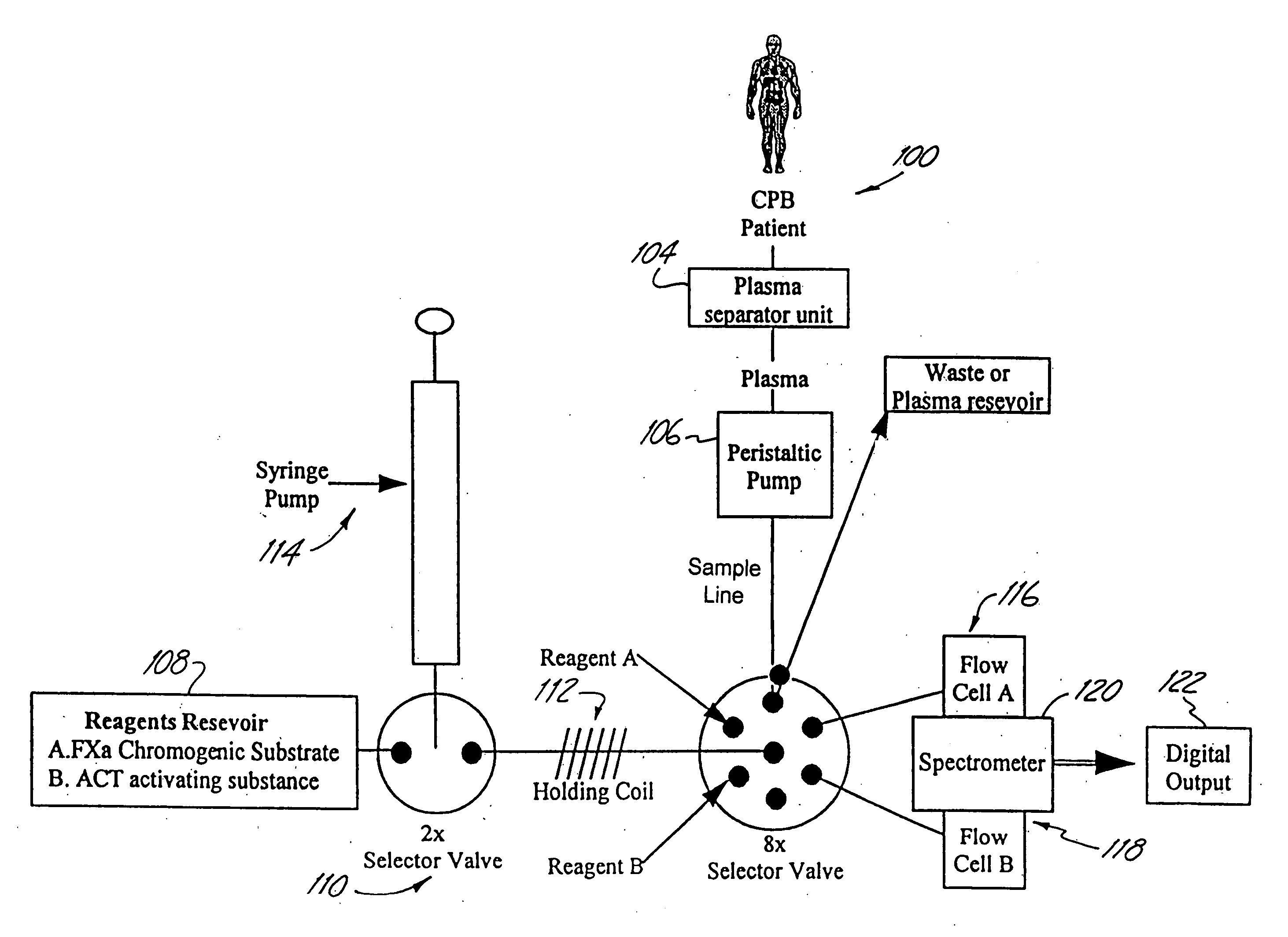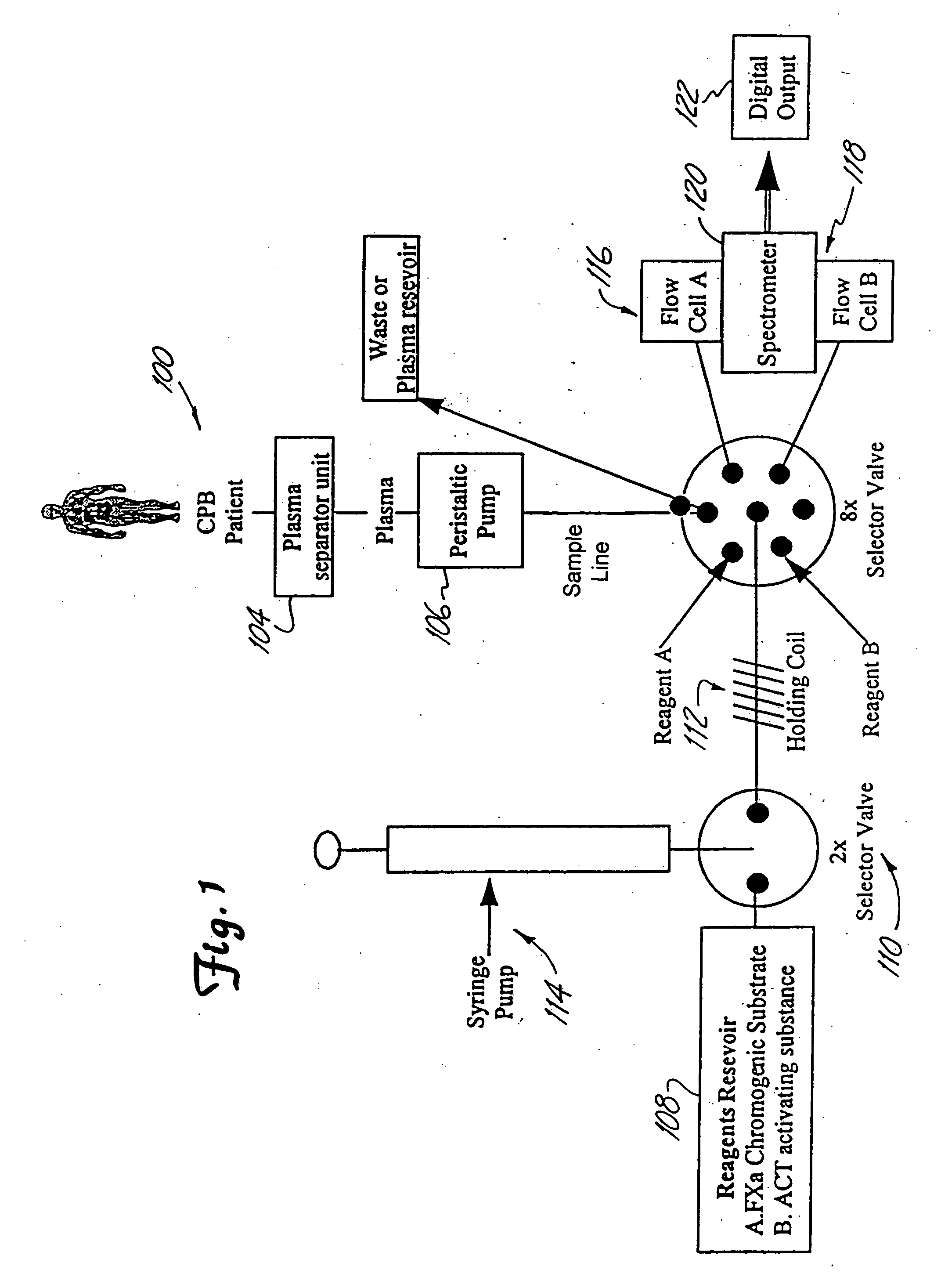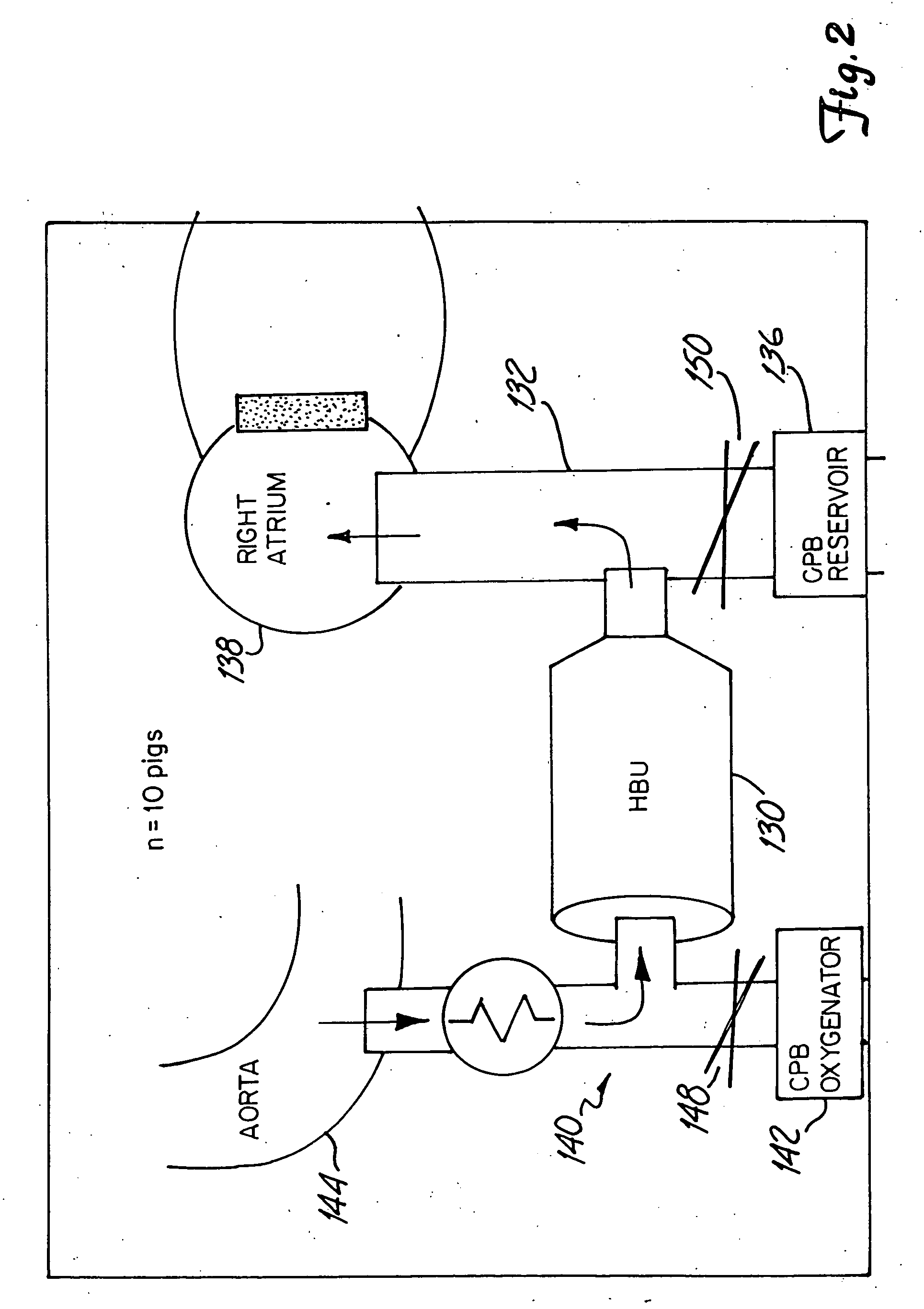Hemostatic system and components for extracorporeal circuit
a technology of extracorporeal circuit and hemostatic system, which is applied in the field of surgical and other procedures, can solve the problems of protamine, which has its own drawbacks, and has the ability to reduce the function of the organ, and achieves the effect of reducing the number of organs
- Summary
- Abstract
- Description
- Claims
- Application Information
AI Technical Summary
Benefits of technology
Problems solved by technology
Method used
Image
Examples
example 1
System Evaluation
[0086] A fiber optic device is tested for accuracy and reproducibility by comparing a series (n=10) of plasma sample measurements with commercially available kits and reagents. Heparin concentration from the present system are compared to values obtained using the commercially available Fxa kit provided by DiaPharma Coatest Heparin, as well as values obtained by Medtronic's HEPCON system. ACT times are compared to values obtained from the Hemochron and Medtronic HMS. Aprotinin concentration and kallikrein inhibition are compared to values obtained using Chromogenix commercially available kits.
[0087] Standard curves from known controls are analyzed and closely measured. A system of this invention is calibrated with control levels of plasma, to which the patient's values can be determined. Finally, miniaturized device accurately and reproducibly measures the controls that will serve to calibrate the standard curve.
[0088] In the Examples below, in vitro blood loop e...
example 2
In Vitro Blood Loop
[0089] In vitro blood loop testing is performed to analyze the real time coagulation management system with the plasma separator attached. Approximately 1500 mL of freshly drawn porcine whole blood are drawn into a heparinized vacutainer that is preloaded 1500 units of heparin (final concentration 1 U / ml heparin). The in vitro blood loop includes a roller pump, ⅜″ PVC tubing and connectors, soft venous bag reservoir, membrane oxygenator and plasma separator. Blood gasses are monitored and conditions are maintained at pH of 7.4, pO2=100 mm Hg, pCO2=40 mm Hg.
[0090] During the first set (n=3) of in vitro experiments heparin concentration is varied while aprotinin concentration is kept constant. For each experiment heparin concentration starts at 1 U / ml and after 30 minutes of continuous measurement reading with the system the heparin dose is increased by 0.5 U / ml final concentration. After each adjustment of heparin concentration measurements is recorded for 30 min...
example 3
Porcine Cardiopulmonary Bypass
[0092] An experiment is performed in which 6 pigs are placed on cardiopulmonary bypass for 2 hours. An initial heparinization of 300 U / kg is administered to the pigs, and a Half-Hammersmith dosage of aprotinin is administered pre-bypass, with no further administration of aprotinin. During the two-hour bypass no adjustment to heparin is. Reading of ACT, Heparin concentration and aprotinin induced KIU are measured continuously using a system of this invention. In addition ACT is measured using the Hemochron and HepCon. Heparin concentration is measured using the HepCon and commercially available kit. Aprotinin induced KIU is measured in a microtiter well assay. Statistical analysis of all measurements is recorded and comparison made with commercially available measurement systems.
[0093] All animal care is in compliance with the “Principles of Laboratory Animal Care” formulated by the National Society for the Medical Research and the “Guide for the Care ...
PUM
| Property | Measurement | Unit |
|---|---|---|
| ACT time | aaaaa | aaaaa |
| ACT time | aaaaa | aaaaa |
| pressure drop | aaaaa | aaaaa |
Abstract
Description
Claims
Application Information
 Login to View More
Login to View More - R&D
- Intellectual Property
- Life Sciences
- Materials
- Tech Scout
- Unparalleled Data Quality
- Higher Quality Content
- 60% Fewer Hallucinations
Browse by: Latest US Patents, China's latest patents, Technical Efficacy Thesaurus, Application Domain, Technology Topic, Popular Technical Reports.
© 2025 PatSnap. All rights reserved.Legal|Privacy policy|Modern Slavery Act Transparency Statement|Sitemap|About US| Contact US: help@patsnap.com



